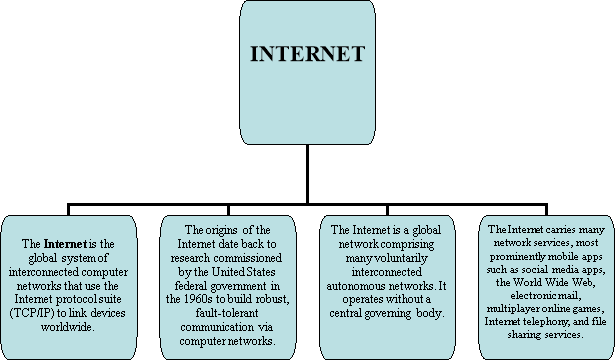Conducting training courses in English language at higher education institutions require from teacher using the effective educational technologies, particularly those who have trained to teach adults, a variety of problems and generate a range of worries. Unfortunately, it is common for teachers to be asked by their institution to teach young learners even though they do not have specific training. Those first lessons with the class, which are quite probably in a different institution to your regular work, can seem daunting. In this paper, we try to provide some advice on how to deal with starting work with higher-level students and we have given top management methods.
Before you begin to teach
Find out who your students are
– Talk to the class teacher and find out if the students are complete beginners in English or have already learnt more.
– Are there any bilingual students in the class? If so, use them as your helpers.
– Do any of the students speak another language?
– You will find that the students will be highly motivated and excited about learning a foreign language. Your main aim is to maintain this initial motivation and sustain their curiosity and interest so that they develop a real desire to learn the language, even if you don't feel they are learning very fast. You need to be realistic and so do the students about how much they can learn in the relatively short time you will spend with them.
– It is quite normal for students to take some time before they actually start producing much language as they will need time to familiarize themselves with you — very probably the first native speaker of English they have ever met — and assimilate the language before they feel ready and confident enough to produce any.
– Be patient and do not be afraid of repeating things again and again — students need and enjoy lots of opportunities to hear the language. Just remember to be natural.
Preparation practical:
– Get to know the class teacher and how they can help you.
– How many students in your course?
– What can you and can you not do in the auditorium, for example, move furniture around?
– Will the class teacher stay with you during the English lessons?
– Find out about your course's etiquette?
– How long are your lessons? Eighty minutes, or more hours?
– Are you allowed to display students' work on the exhibition desks?
– Can you create an English corner?
– What resources does the university have that you can use?
– How many photocopies are you allowed making?
– Can you take the students into the thematic conversation in English?
– Can you use a computer and projector during the lessons?
Top ten course management tips for successful teaching
– Plan what you are going to do in advance step by step and have clear aims so you and your students know exactly where you are going throughout a lesson. This is the only way you will be able to control up to 15–20 students in one group — and they will be the first to know if you have not prepared and respond by becoming disruptive.
– Start your year by being firm and be consistent in your own actions and behavior — students expect a disciplined, structured auditorium environment and respond well to routines. Check with the class teacher what acceptable and unacceptable behaviors are and make it clear to the students that you expect the same behavior.
– Learn your students' names and address them directly.
– Be mobile and walk round the auditorium.
– Have a clear signal for stopping activities or when you want students to be quiet. Get silence and wait for their full attention before you start speaking and give clear instructions or demonstrations. Make sure to students understand what they have to do.
– Never, underestimate students' abilities or intelligence. They may have very limited English but they still have the same interests and aspirations as any other child of their age. Keep them interested by providing stimulating content and meaningful activities.
– Always ensure that students have some English 'to take away' with them at the end of a lesson. Students will feel proud and have a sense of achievement if they leave the auditorium being able to ask, for example, a new question in English, say something about them, or sing a song. This means (see the first point above) that your aims will be clear to the students.
– Avoid activities that over-excite — it is often difficult to return to a calm and controlled learning environment after a noisy lesson. Avoid activities that require a lot of movement as you will find that there is often very little space in an auditorium for this type of activity. Also avoid activities that require a lot of cutting and pasting unless there is a clear linguistic outcome, as these can cut into valuable time, apart from creating a great deal of mess.
– Make positive comments about the students' work and efforts and let them see that you value their work.
– Have additional material prepared to cope with faster and slower students' needs and do not let activities go on too long.
We recommend the following practical trainings which is conducted by interactive methods with students.
Theme: «Internet» hooks or the life of the network. Discussions about national traditions and the ethics of using internet.
The first stage: It will be distributed keywords of the theme which can open the contents. For example, “Internet”, “Social networks”, “The ethics of using internet”. It will be divided time to students for collecting data and preparing report on the key terms.
The second stage: Students analyze the text on the basis of collected information.
The third stage: Students will be divided in a group on the names of keywords. As a result, It’ll be organized the groups of «Internet», «The Social Network» and «Internet ethics».
The task: Each group makes the text content of group name by the exercise of “Cluster” in a paper. At the end of the time a student of each group will do presentation. For example, the text of the group of “Internet” will be as followed:

Fig. 1: The brief content of the theme of “Internet” [1]
The fourth stage: Each group SWOT analysis of the theme. For example, we analyze the theme of “Internet” as followed:
S — “Strength”- The strong side of internet is that, his options are limitless. It’s high grade of database and the speed of finding out data.
W — “Weak”- It has not been guaranteed reliability of information on the Internet.
O — “Opportunity” — An online training capability to help support the dissemination of information and to provide an educational opportunity for the general public is a new opportunity provided by the Internet [2].
T — “Threats” — The threat side of the Internet is that, by Internet and various social networks, many young people join to terrorist groups, evil ideas, even do subversive actions. For example, a number of Russian Internet providers have begun to insist that the state supervisory bodies act within the law when using their powers to prevent extremism. The Novosibirsk-based company Novotelecom refused to block access for its users to the film Innocence of Muslims until it had been ruled to be extremist by a court. Russia is a global threat to a free and open Internet, since it is much more interested than China in passing international laws to regulate the Web. China has solved its internal political problems by building the Great Firewall of China and forcing the major market players like Google to play by its rules. At the same time, for Russia this provides a self-evident means to justify the constantly increasing pressure placed on Internet users and activists within the country [3].
After intensive debate, the teacher will finish the lesson. Dialogue conducted in this manner increases the efficiency and relevance of the topic of the lesson.
We hope that this kind of advanced educational technologies can ensure the effective organizations of training courses, as well as help the students should master the English language well during trainings.
References:
- en.wikipedia.org›Internet
- context.reverso.net›…opportunity…by the Internet
- agora.rightsinrussia.info›archive…global-threat
- Alessi, S., & Dwyer, A. (2008). Vocabulary assistance before and during reading. Reading in a Foreign Language, 20(2), 246–263;
- Anderson, N. J. (2013). A curricular model for reading: The inclusion of extensive reading. TESL Reporter, 46(1&2), 1–9;
- Appleton, J. (2004). Jungle Fever-- Visualisation and the implications for writing extensive readers. Developing Teachers.com. Retrieved January 2, 2005 from http://www.developingteachers.com/articles_tchtraining/junglefever1_jo.htm;
- Bright, J. A., & McGregor, G. P. (1970). Teaching English as a second language: Theory and techniques for the secondary stage. London: Longman;
- Buetow, J. (2016, November 16). Using technology to inspire independent readers. Edutopia.org. Retrieved from https://www.edutopia.org/article/using-technology-inspire-independent-readers-jesse-buetow;
- Cliffe, S. (1990). How to set up a class reading library. The Language Teacher, 14(12), 29–30;
- Dunning, B. D. (1988). Young adult literature as a bridge to academic success. TESOL Newsletter, 23(6), 1, 10–11.







